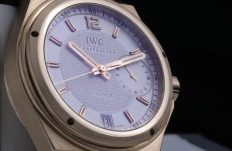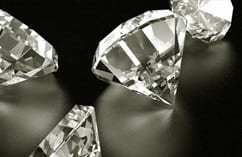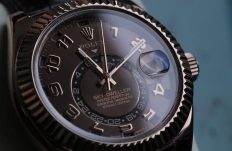All that glitters is not gold. As popular as the saying may be, some people still ignore its wisdom. According to recent news, fake gold and silver have been flooding the markets in several countries. Knowing how to recognize the real thing is one of the keys to making a sound investment.
Counterfeit gold can be recognized even by individuals who aren’t professionals in the field. Here are a few of the important tips to remember.
A Few Simple Tests
There are several simple tests that can be used to identify counterfeit gold.
The first one is the size test. This test can be used as a first line of defense in the case of counterfeit coins. Remember that gold investment coins must correspond to a certain size requirement. If the diameter is different, the coin is most probably a counterfeit one.
A magnet can also be used to test for counterfeit gold. It will work whenever gold is mixed with other metals or if something completely different is presented as gold. Gold is a precious metal that doesn’t have magnetic properties. Thus, a magnet should not be capable of attracting it.
The final testing possibility is called the assay test. This is a specialized test that will need to be carried out by a professional. Since during this test, gold will be tested with fire, the gold piece is placed in a crucible, lead oxide (or other additive) so that telltale used and separate layers will form, if the gold is mixed with another metal.
Bonus Tip: Water Testing
This is another simple test that can be performed in the comfort of one’s home. Simply drop the piece of gold that you want to test in a glass or a pan of water. Counterfeit gold will usually float to the surface.
If you leave the piece of gold in the water for some time and it starts to rust, you can be 100 percent confident that it’s not real gold or that it’s been mixed with another metal. The only issue with this test is that some time will be required to get a result.
Calculating the Density of Gold
Real gold has one characteristic that makes it different from all other metals – it’s incredibly dense. The density of pure gold (24K) is 19.3 grams per millilitre. The higher the density your gold piece is, the purer the metal is. Using a scale to weigh the gold piece is one of the first options for determining its density. This is a test that most jewellers will do for their clients. Next, you can test the density of the gold by immersing it in water. Choose a vial that has millilitre markings. Place some water inside, preferably to a marking that will make it easier for you to calculate the displacement. Place the gold piece inside and calculate the difference from the original volume.
To calculate density, you can use a simple formula – density equals mass divided by volume displacement. If the result you get is close to 19.3 grams per millilitre, chances are, you own real gold.
Identifying counterfeit gold isn’t always an easy task and you shouldn’t trust appearance alone. The good news is that some of the tests can be performed while you’re buying gold. The bad news is that some people will get inconclusive answers. Relying on a professional to do a gold assessment for you and buying from reputable seller can help you acquire authentic gold instead of throwing your money out the window. For more information on counterfeit gold or to purchase real gold pieces, visit us in person at 2570 Yonge Street, near Yonge, or contact us online today!








